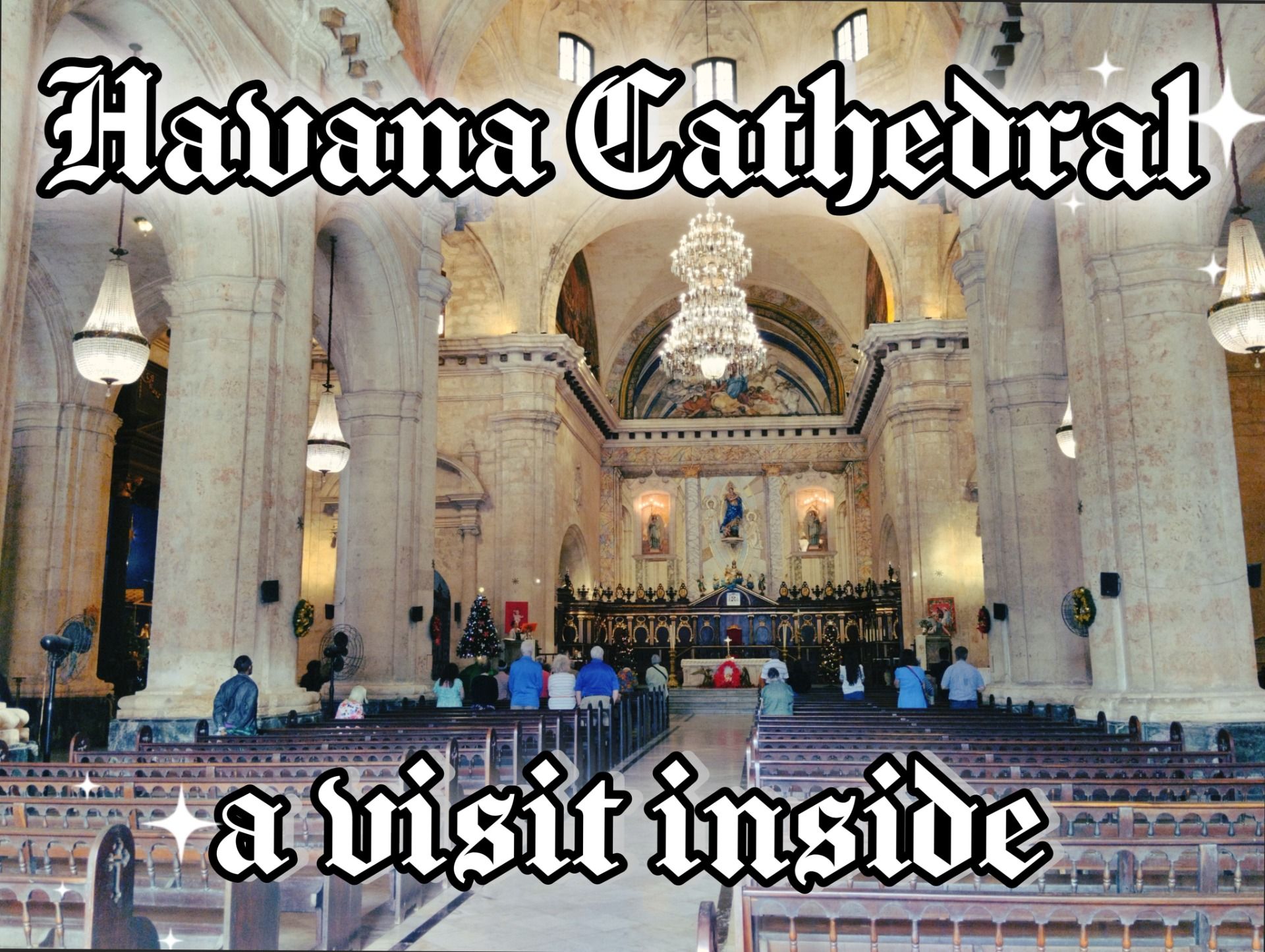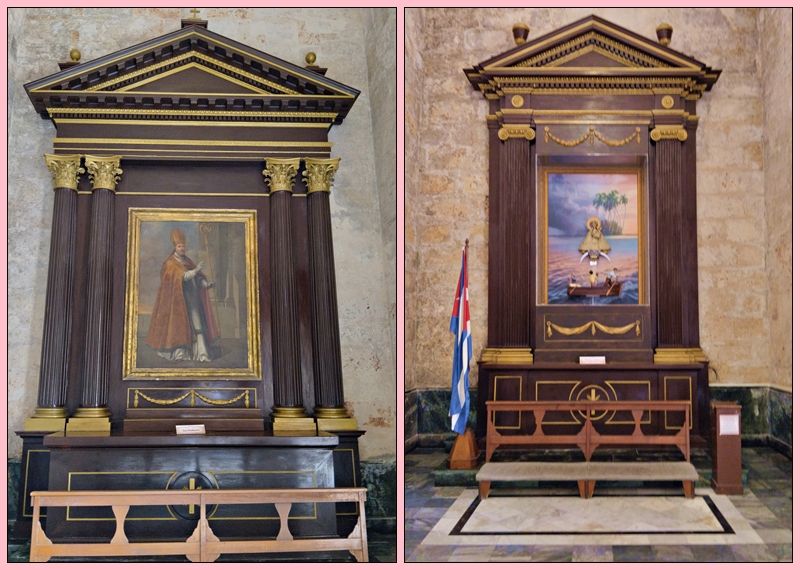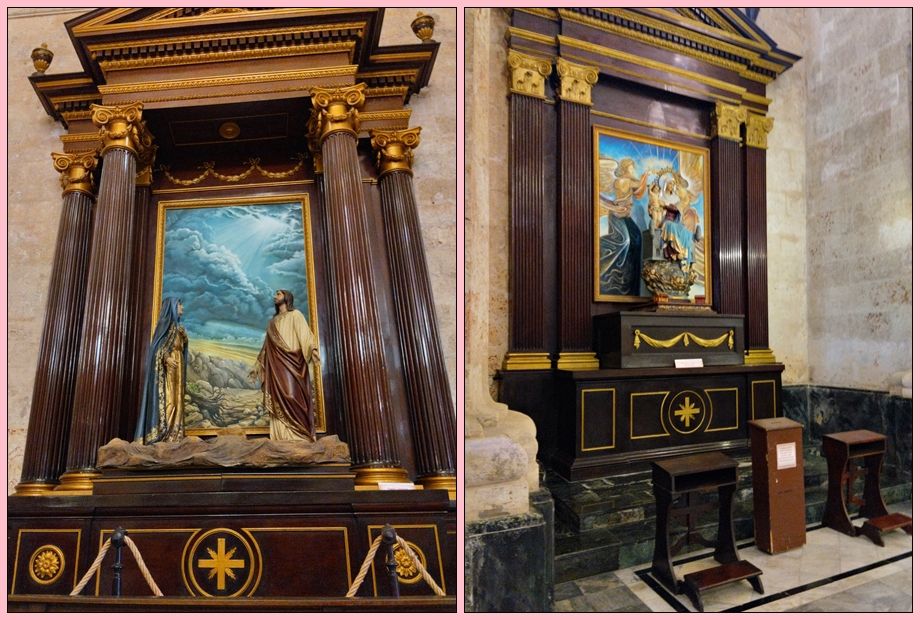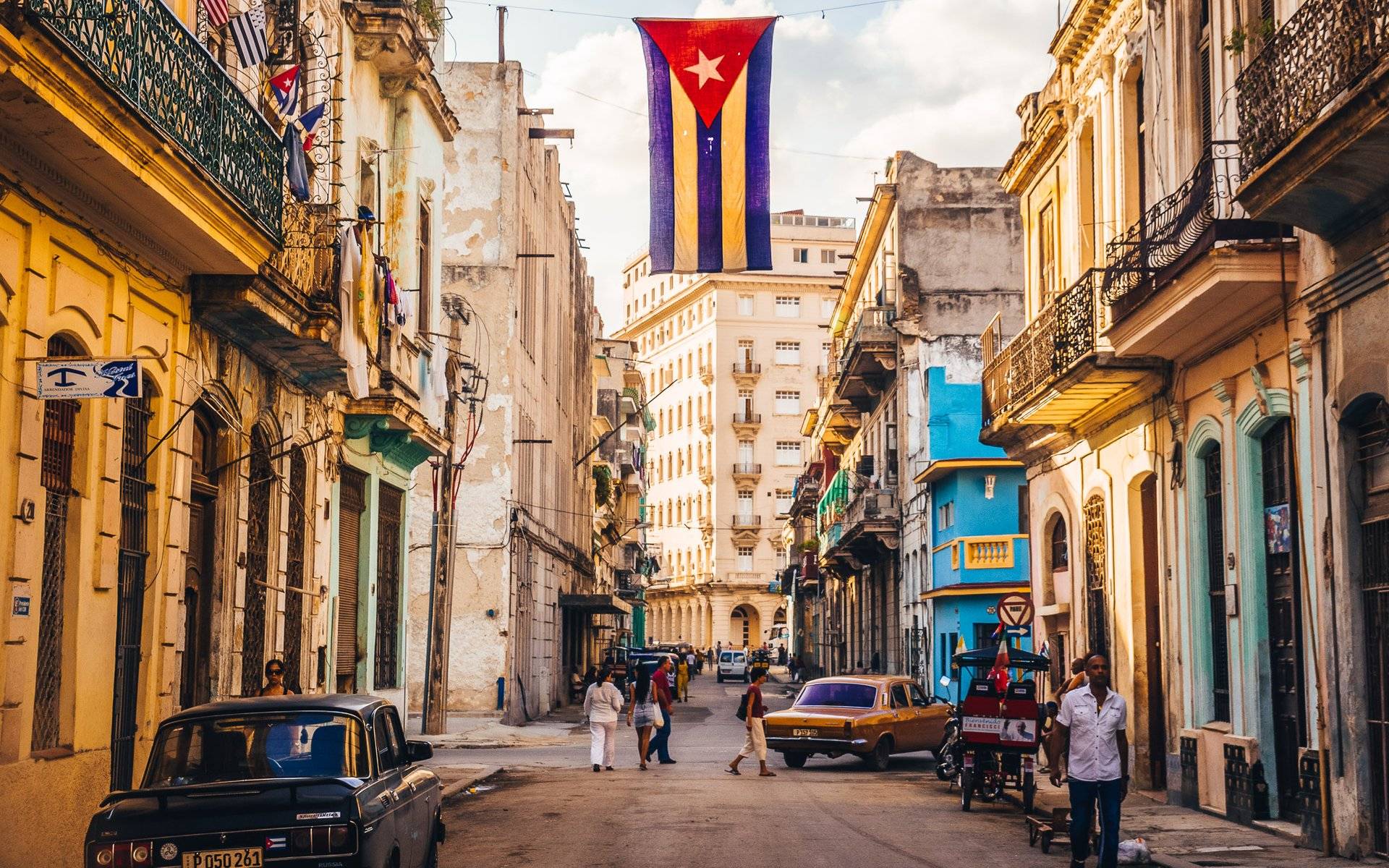English Version
The Havana Cathedral is one of the most emblematic constructions of Cuban architecture and a source of pride for the nation, having been declared a World Heritage Site. As a lover of my country's colonial architecture I have always wanted to explore the interior of this magnificent temple and it was not until recently that I was able to fulfil that wish, and I was amazed by the beauty and harmony I found inside.
In a previous post I already showed the impressive exterior architecture of the cathedral, but this time I want to share with you all the treasures inside. The cathedral is a grandiose temple, its majestic height and soaring bell towers are imposing. However, it is not only its façade and grand stone construction that are spectacular, its interior is also absolutely stunning. Of all the churches I have visited and described in my publications, this is undoubtedly the most extraordinary.
Peace was the first thing I felt as I walked up the steps and through the wide wooden gates of the main entrance. It was Sunday and they were celebrating a mass, which made me doubly excited to be able to witness this religious ceremony.


The vaulted ceiling rises high and looking up I could see colourful paintings depicting religious scenes in the space above between its sturdy columns. These murals adorn the walls surrounding the main altar, and they are absolutely beautiful. In the centre of the ceiling a large teardrop-shaped chandelier illuminates the central nave. The floor is all marble, and features geometric figures in white, black and grey, creating an elegant and sophisticated pattern.

Along both sides of the central nave there are several altars dedicated to different saints and virgins. What impressed me most about each one was the great height of the altars and the detail in their engravings and paintings. They also had a nativity scene recreating the birth of Jesus, along with a large Christmas tree. Although access to this area was forbidden, I was able to take some photos of this scene that marks such a significant moment for the Catholic religion.
Every thing I saw in this grandiose temple amazed me and I was enchanted by all that was going on around me. I left feeling very pleased to have been able to visit the place, although I have heard that there are times when you can also climb the bell tower, from where you have a spectacular view of the square and the city, so I still have another visit to make.

The Cathedral is not only a religious icon and a jewel of colonial architecture, it is also a cultural symbol that has often been immortalised in various works of art by outstanding Cuban artists, who have been inspired by its beauty to immortalise it in brilliant works of art.
This is why the Havana Cathedral is not only a great building, but a symbol that represents the history and the rich cultural heritage of the identity of the Cuban people and the Capital.


Versión en Español
La Catedral de La Habana es una de las construcciones más emblemáticas de la arquitectura cubana, y un orgullo para la nación, habiendo sido declarada Patrimonio de la Humanidad. Como amante de la arquitectura colonial de mi país siempre he deseado explorar el interior de este magnífico templo, y no fue hasta hace poco que pude cumplir ese deseo, y quedé maravillada con la belleza y armonía que encontré en su interior.
En una publicación anterior ya mostré la impresionante arquitectura exterior de la catedral, pero esta vez quiero compartir con ustedes todos los tesoros que alberga en su interior. La catedral es un grandioso templo, su majestuosa altura y torres campanarios que se elevan al cielo son imponentes. Sin embargo, no solo su fachada y gran construcción de piedra son espectaculares, su interior también es absolutamente asombroso. De todas las iglesias que he visitado y descrito en mis publicaciones, esta sin duda es la más extraordinaria.
Paz fue lo primero que sentí al subir los escalones y traspasar los anchos portones de madera de la entrada principal. Era domingo y estaban celebrando una misa, lo que me emocionó el doble al poder ser testigo de esta ceremonia religiosa.
El techo abovedado se alza a gran altura y al mirar hacia arriba pude ver coloridas pinturas que recrean escenas religiosas en el espacio superior entre sus robustas columnas. Estos murales adornan las paredes que rodean el altar principal, y son absolutamente hermosos. En el centro del techo una gran lámpara con formas de lagrima ilumina la nave central. El piso es todo de mármol, y presenta figuras geométricas en colores blanco, negro y gris, creando un patrón elegante y sofisticado.
A lo largo de ambos laterales de la nave central hay varios altares dedicados a diferentes santos y vírgenes. Lo que más me impresionó de cada uno fue la gran altura que tienen y el detalle en sus grabados y pinturas. También tenían colocado el pesebre que recrea el nacimiento de Jesús, junto con un gran árbol de Navidad. Aunque en esta área tenían prohibido el acceso, si pude tomar algunas fotos de esta escena que marca un momento tan significativo para la iglesia católica.
Cada cosa que veía en este grandioso templo me maravillaba y estaba encantada con todo lo que sucedía a mi alrededor. Salí sintiéndome muy a gusto de haber podido visitar el lugar, aunque he escuchado decir que hay momentos en que también se puede subir al campanario, desde donde se tiene una vista espectacular de la plaza y la ciudad, así que aún me queda otra visita al lugar.
La Catedral no es solo un ícono religioso y una joya de la arquitectura colonial, es además un símbolo cultural que también ha sido inmortalizado en diversas obras de arte por destacados artistas cubanos, quienes se han inspirado en su belleza para inmortalizarla en geniales obras de arte.
Es por todo esto que La Catedral de la Habana no es solo una gran edificación, sino todo un símbolo que representa la historia y la rica herencia cultural de la identidad del pueblo cubano y la Capital.

]
![Havana Cathedral, a visit inside [EN/ES]](https://img.truvvle.com/?src=aHR0cHM6Ly9pbWcudHJhdmVsZmVlZC5pby9qb3JkeTA4MjclMkYyMDI1LTAxLTI2LTA1LTAxLTkyNC1jb3Zlci1qcGc&width=3840)















 Havana
Havana